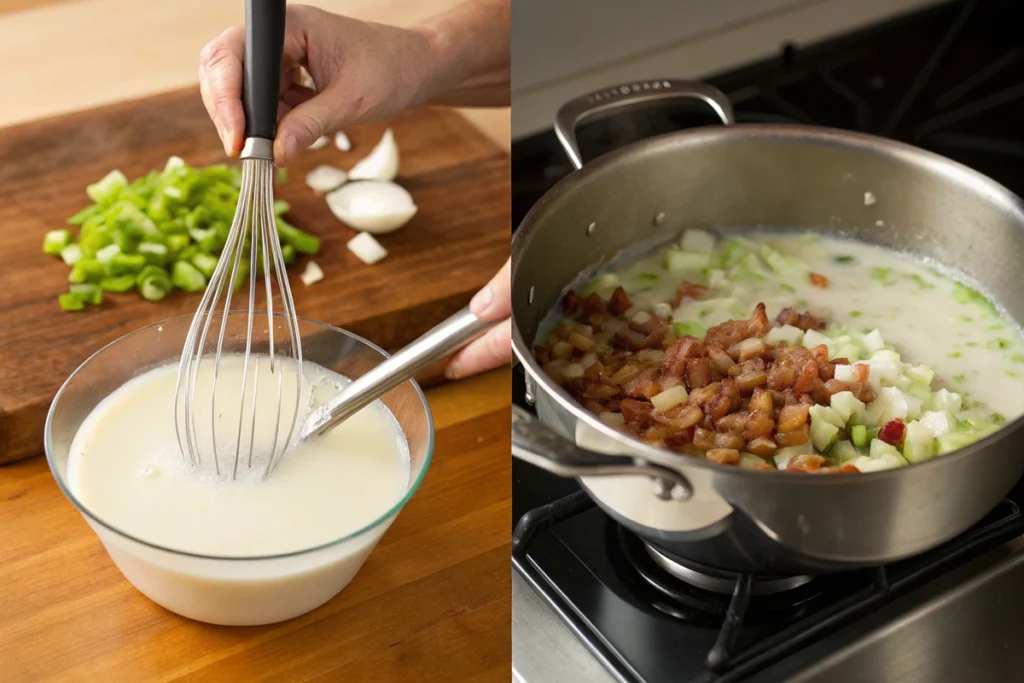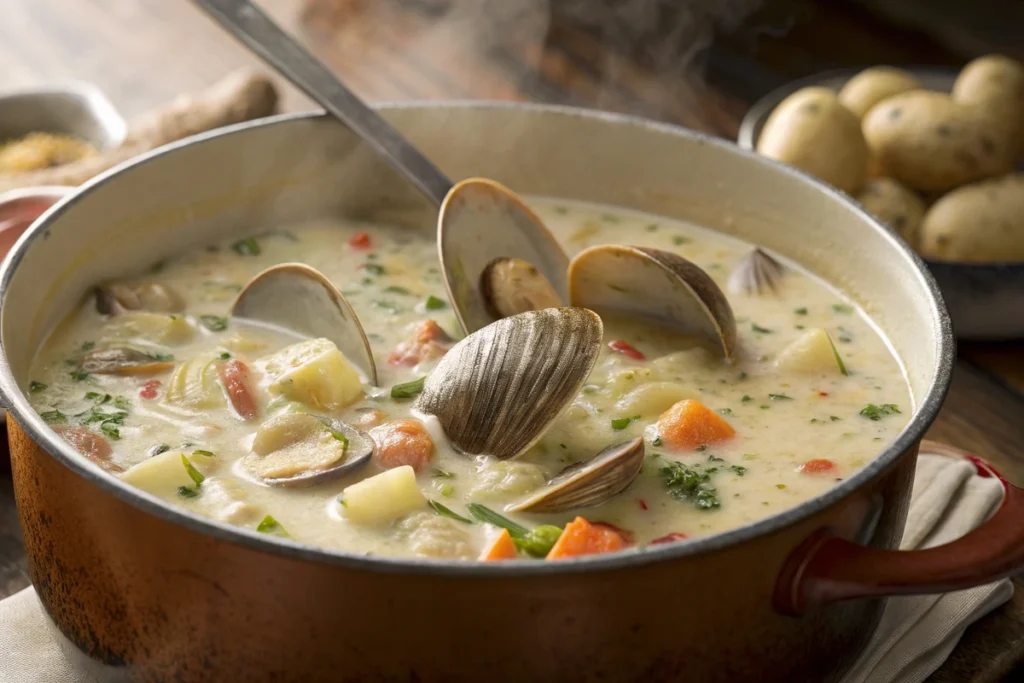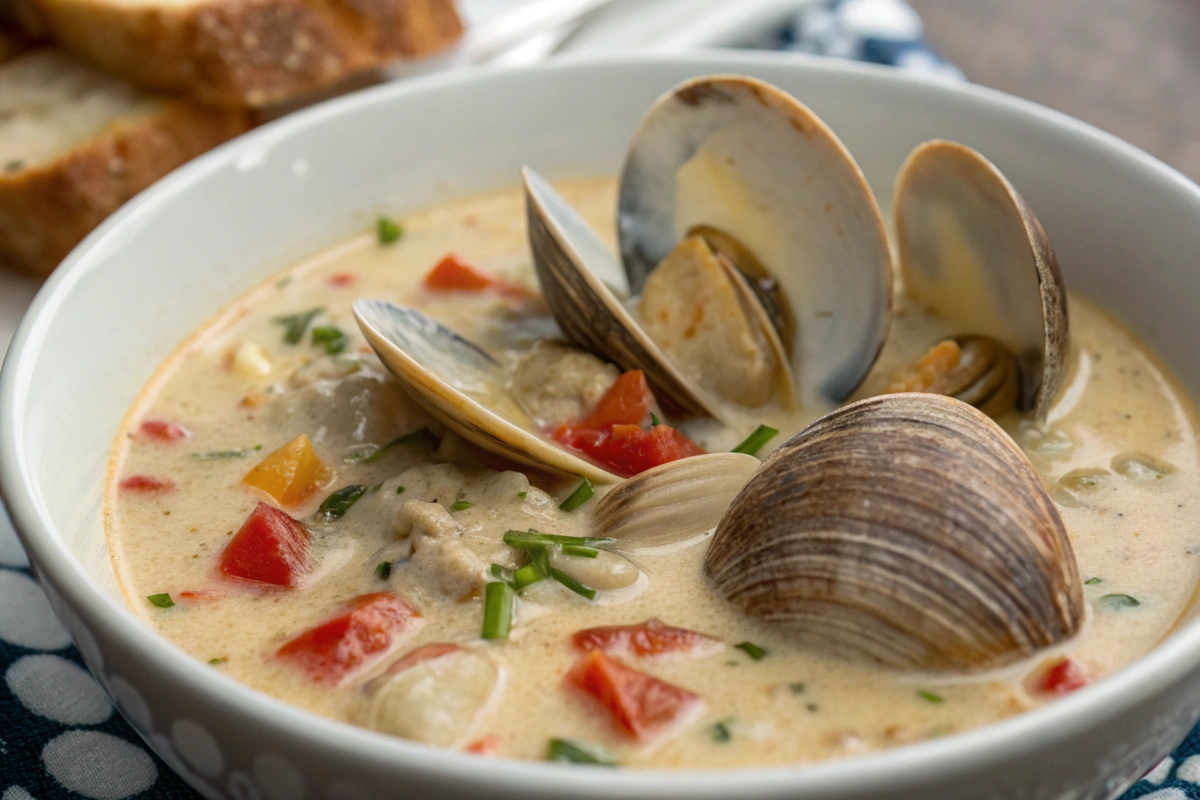Clam chowder is more than just a soup—it’s a comforting bowl of history, love, and tradition. For generations, grandmother’s restaurant Omaha clam chowder recipe has captured the hearts and taste buds of locals and visitors alike. This article dives deep into the legacy of this iconic dish, sharing its history, recipe secrets, serving ideas, and even some creative variations. By the end, you’ll be ready to whip up a batch of your own, carrying on the timeless culinary tradition.
Introduction to Grandmother’s Clam Chowder Recipe
The Origins of Grandmother’s Restaurant and Its Legacy
Nestled in the heart of Omaha, Grandmother’s Restaurant is renowned for its homestyle cooking and welcoming atmosphere. Moreover, this family-run establishment has been serving classic dishes for decades, with their clam chowder earning legendary status. For instance, locals seeking a warm meal on chilly days flock to the restaurant, while tourists are eager to taste a piece of Omaha’s culinary history. As a result, the chowder has become a beacon of comfort food. Ultimately, it serves as a symbol of the restaurant’s enduring appeal and dedication to quality.
Why Omaha’s Clam Chowder Is Special
Unlike traditional New England or Manhattan clam chowders, Omaha’s version brings a unique twist. It’s a perfect blend of creamy richness and hearty goodness, often made with locally sourced ingredients. This version stands out due to its thick consistency and a subtle hint of Midwest flavor—making it a dish to remember.
Overview of the Recipe’s Popularity
The grandmother’s restaurant Omaha clam chowder recipe isn’t just a dish; it’s a symbol of love and connection. Food bloggers rave about it, families pass it down through generations, and customers return time and again for that nostalgic taste. Whether served as a starter or a main course, it has an undeniable charm that resonates with everyone who tries it.
History of Clam Chowder and Its Variations
Clam Chowder Through the Ages
Clam chowder has roots as deep as the ocean, originating from European settlers in America during the 18th century. They crafted this dish as a hearty and nourishing meal, perfect for harsh winters. Over time, it evolved into various regional styles, each putting its own spin on this humble recipe. Whether thickened with cream or brimming with tomatoes, clam chowder has remained a beloved classic.
Regional Differences in Clam Chowder Recipes
When people think of clam chowder, New England’s creamy style often comes to mind. But the Manhattan version, with its tomato-based broth, and the West Coast’s lighter, butter-rich versions also hold their own. What makes grandmother’s restaurant Omaha clam chowder recipe stand out is its seamless blend of these styles, capturing the heartiness of the Midwest while keeping the rich creaminess of New England chowder.
Omaha’s Unique Take on the Classic Recipe
Omaha’s spin on clam chowder embraces local flavors and textures. It’s thick, velvety, and packed with savory clams, potatoes, and smoky bacon. But it’s not just about the ingredients—it’s the warmth and hospitality poured into every bowl at Grandmother’s Restaurant that makes it unforgettable. This recipe is a true testament to the city’s love for hearty comfort food.
Grandmother’s Clam Chowder Recipe Step-by-Step
Ingredients Needed for Authentic Grandmother’s Clam Chowder
The secret to grandmother’s restaurant Omaha clam chowder recipe lies in its carefully chosen ingredients. Here’s what you’ll need:
- Fresh or canned clams
- Heavy cream and milk for a rich, creamy base
- Potatoes, diced for texture
- Smoky bacon or pancetta for depth
- Onions, celery, and garlic to build flavor
- Flour for thickening
- Seasonings: thyme, bay leaves, salt, and pepper This balance of simple, high-quality ingredients is the cornerstone of this cherished dish.
Preparing the Ingredients
Before diving into the cooking, prepare everything ahead of time:
- Dice the vegetables uniformly to ensure even cooking.
- Fry the bacon until crispy, then set it aside while reserving the fat for flavor.
- If using fresh clams, scrub them clean and steam until they open, saving the briny juice for the soup.
Cooking Instructions for Perfect Clam Chowder
Here’s how to bring it all together:

- In a heavy-bottomed pot, sauté onions, celery, and garlic in bacon fat until soft and fragrant.
- Sprinkle in flour and cook until it forms a light roux.
- Slowly whisk in clam juice and milk, avoiding lumps, and bring it to a gentle simmer.
- Add potatoes, thyme, and bay leaves, cooking until the potatoes are tender.
- Stir in the clams, cream, and crispy bacon, letting the flavors meld together for a few minutes.
- Adjust the seasoning, remove the bay leaves, and serve hot with crusty bread.
Expert Tips for Enhancing the Recipe’s Flavor
- Boost the brininess by adding a splash of clam juice or fish stock.
- Thicken to your liking: Blend a portion of the soup if you prefer a smoother texture.
- Experiment with seasonings: A pinch of smoked paprika or a dash of white wine can add complexity.

This step-by-step guide brings the magic of grandmother’s restaurant Omaha clam chowder recipe straight to your kitchen.
Serving and Pairing Suggestions
How to Serve Omaha Clam Chowder
Serving grandmother’s restaurant Omaha clam chowder recipe is as much an art as cooking it. Use deep, rustic bowls to highlight the hearty presentation, and garnish with freshly chopped parsley or a sprinkle of paprika for color. Add oyster crackers or a slice of crusty sourdough bread to complete the dish. The warm, inviting aroma is enough to make it a centerpiece for any gathering.
Best Side Dishes to Complement the Recipe
Pairing sides with this creamy chowder enhances its rich flavors. Some popular options include:
- Garlic butter breadsticks for a buttery crunch.
- Fresh green salads to cut through the richness.
- Corn on the cob for a hint of sweetness. For more comforting soup recipes, you can explore the Creamy Parmesan Italian Sausage Soup for additional inspiration.
Pairing the Dish with Beverages
A perfectly paired drink can elevate your clam chowder experience. Consider:
- A crisp, dry white wine like Sauvignon Blanc or Chardonnay.
- A chilled craft beer with light, malty notes.
- For non-alcoholic options, sparkling lemonade or apple cider makes an excellent choice.
Variations and Creative Twists
Adding Local Ingredients for a Twist
While grandmother’s restaurant Omaha clam chowder recipe is timeless, adding a local spin keeps it fresh. Swap traditional potatoes for sweet potatoes or incorporate smoked corn for added texture. These subtle changes create a delightful twist while keeping the heart of the recipe intact.
Vegan and Gluten-Free Adaptations
For those with dietary restrictions, the recipe can easily be adapted:
- Use coconut milk or almond cream for a dairy-free alternative.
- Replace flour with cornstarch or arrowroot powder to keep it gluten-free.
- Substitute clams with mushrooms and kelp flakes for a vegan-friendly umami boost.
Seasonal Variations to Try
Take inspiration from the seasons:
- In summer, lighten the chowder with fresh herbs like dill or basil.
- In winter, add hearty ingredients like sausage or smoked ham to intensify the flavors.
- Fall calls for the addition of roasted squash for a nutty sweetness.
These variations ensure the recipe stays versatile and appealing, no matter the occasion.
The Heartwarming Legacy of Family Recipes
The Emotional Connection Behind Family Recipes
Every spoonful of grandmother’s restaurant Omaha clam chowder recipe tells a story of love, tradition, and comfort. Family recipes like this connect generations, creating lasting memories around the lunch table. Whether it’s the aroma of simmering chowder or the sight of familiar ingredients, these dishes evoke a sense of belonging and nostalgia.
Preserving Culinary Traditions
Preserving recipes like this isn’t just about keeping ingredients and steps intact; instead, it’s about cherishing the emotions and stories behind them. Additionally, handing down Grandmother’s Restaurant Omaha clam chowder recipe ensures that the values of care, hospitality, and attention to detail continue to thrive. Furthermore, in an age dominated by fast food, taking the time to honor such traditions is truly a gift. Ultimately, this practice keeps the essence of family and culinary heritage alive for future generations.
Inspiring the Next Generation of Home Cooks
Family recipes inspire young cooks to explore the kitchen, fostering a love for cooking and creativity. Recreating this clam chowder at home isn’t just about getting the taste right—it’s about feeling part of something bigger. It’s an opportunity to innovate while staying true to the roots of a beloved dish.
Clam Chowder Calories
| Nutrient | Amount per Serving (1 cup) |
|---|---|
| Calories | 220 kcal |
| Total Fat | 12 g |
| Saturated Fat | 7 g |
| Sodium | 850 mg |
| Protein | 8 g |
FAQs Section
What is the difference between clam chowder and New England clam chowder?
The main difference between clam chowder and New England clam chowder lies in their base and regional styles. While New England clam chowder is creamy and thick, featuring a heavy cream or milk base, other clam chowders, like Manhattan clam chowder, use a tomato-based broth. Additionally, New England clam chowder includes potatoes and minimal seasoning, emphasizing a rich, mild flavor. In contrast, regional variations, such as Rhode Island clam chowder, may use clear broth with no cream or tomatoes. Ultimately, each style offers a unique twist, but New England clam chowder remains the most iconic and widely recognized version.
What’s the difference between a bisque and a chowder?
The difference between a bisque and a chowder lies in their texture and ingredients. Firstly, bisque is a smooth and creamy soup, typically made with pureed seafood or vegetables. In contrast, chowder is chunkier, often containing pieces of seafood, potatoes, or vegetables in a hearty broth. Moreover, while bisques rely on heavy cream for richness, chowders often include milk or a roux for a thicker, rustic feel.
What is the best thickener for clam chowder?
The best thickener for clam chowder is a combination of flour and butter, often referred to as a roux. Firstly, the flour is cooked with butter to form a paste, which helps to thicken the soup base. Additionally, some recipes use heavy cream or half-and-half to add richness and body. Moreover, potatoes can also act as a natural thickener when simmered and mashed slightly. Finally, a cornstarch slurry can be used for a gluten-free alternative, ensuring a smooth, velvety texture.
What flour is best for chowder?
The best flour for chowder is all-purpose flour, as it creates a smooth and consistent texture when making a roux. Initially, this flour is mixed with butter to thicken the soup without altering its flavor. Furthermore, it works well in absorbing the liquids and creating a velvety consistency. Alternatively, if you’re aiming for a gluten-free version, rice flour or cornstarch can be used as substitutes. In conclusion, all-purpose flour remains the go-to choice for most traditional chowder recipes.
How Do I Store Leftover Clam Chowder?
To store leftovers, transfer the soup to an airtight container and refrigerate for up to 3 days. Reheat gently on the stove, adding a splash of milk or cream to maintain its creamy consistency.
Can you freeze clam chowder ?
Yes, you can freeze clam chowder, but it requires some care. Firstly, allow the chowder to cool completely before transferring it to airtight containers. Moreover, avoid freezing chowder with dairy, as the cream or milk may separate upon thawing; instead, add the dairy after reheating. Finally, ensure it is consumed within three months for the best flavor and texture.

